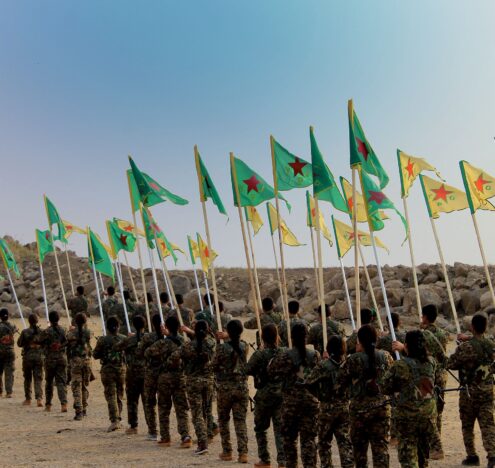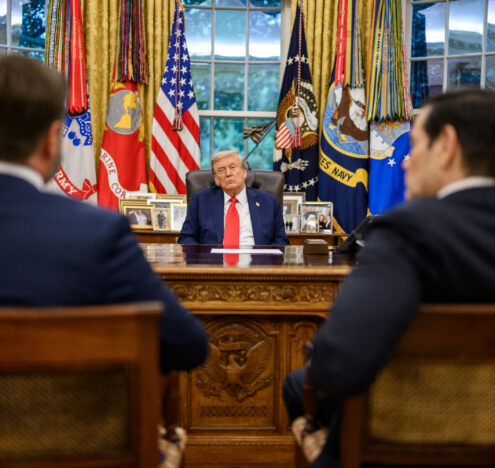On June 26, 2020, the New York Times broke a story about Russian intelligence operatives offering bounties to the Taliban for killing American military personnel. The idea that a rival nation (Russia) was paying a surrogate armed force (the Taliban) to kill American soldiers angered many around the country. Politicians on both sides were quick to jump into the debate about the bounties and what they might mean for US-Russia relations, and some demanded to know why these bounties were ignored. Meanwhile, members of the Trump administration labeled the story “fake news” and tried to explain it away as unreliable intelligence.
Why did news of potential bounties on American forces touch a nerve in America’s psyche? One explanation is that the war in Afghanistan is not very popular, and many are looking for a reason to quicken the withdrawal of forces. Another is that many of the soldiers in Afghanistan are highly trained Special Operations or advisory forces that are the cream of the military and have years of experience. Their loss would hurt the military as they are hard to replace.
However, this was not the first time American forces faced the threat of bounties during a counter-insurgency operation in an unpopular war. During the Vietnam conflict, North Vietnamese and Viet Cong forces used or were accused of using bounties as a way to target American forces. These bounties were also initially ignored by the US, even though they increased the threat to American soldiers.
The news of the Viet Cong and the North Vietnamese offering bounties on US forces appeared early in the conflict. As early as 1964, the Central Intelligence Agency warned that the Viet Cong was offering bounties equivalent to $250 (approximately $2,067 in 2020 dollars) for each American killed. By 1967, the Bangkok Post reported that Communist guerrillas in Thailand had offered bounties of $500 for American soldiers ($3,838.23 in 2020 dollars). Likewise, Communist guerrillas paid bounties on Air Force personnel at American air bases in Thailand: “200 dollars for flying officers, 100 dollars for ground officers and 50 dollars for enlisted men.”
As early as 1964, the Central Intelligence Agency warned that the Viet Cong was offering bounties equivalent to $250 (approximately $2,067 in 2020 dollars) for each American killed.
When the story broke, the spokesperson for the US embassy in Thailand did not seem worried by the threat, even though it was the first time the threats of bounties were made public by the US government. The spokesman stated, “Offering rewards by Communist groups for assassination of American military and civilian personnel … is not a new development. This tactic is one of standard predictable, techniques employed by Communist insurgents anywhere … [and the] threats have been generally ignored.”
While the civilian authorities appeared to be ignoring the threats, the bounties were not ignored by the soldiers, who realized that the bounties increased the hazard to their lives because they had a monetary target on their heads. Reading accounts from soldiers after the war, we find three specific groups who chronicle the threat of bounties on themselves: dog handlers, snipers, and members of Long Range Reconnaissance Patrol teams.
During the war, dogs and handlers were successful in locating the enemy and their weapons caches. This success resulted in the Vietnamese placing bounties on the handlers and their dogs. The US military tattooed the inside of each dog’s ears for identification. Lisa Rogak, in “The Dogs of War,” commented that the Viet Cong offered the equivalent of $20,000 for a dog’s ear; proof of the handler’s death only garnered the equivalent of $10,000.
Army and Marine Corps snipers were another group targeted with the threat of bounties because they were force multipliers on the battlefield. For example, Deono D. Miller, of Olivet, South Dakota, served as a sniper with the 9th Infantry Division in Vietnam, and he commented in an oral history that the Viet Cong had bounties on snipers. Furthermore, Charles W. Sasser and Craig Roberts argued in “One Shot One Kill” that the “North Vietnamese offered a bounty of three years’ pay” to any soldier who could kill Sergeant Carlos Hathcock, the most successful Marine sniper of the war with 93 confirmed kills. The large monetary investment indicated the importance the enemy placed on removing US snipers from the battlefield.
Finally, the Long Range Reconnaissance Patrol teams which operated successfully behind enemy lines and provided important strategic and tactical intelligence were also the subject of enemy bounties for individual members or a captured team. Michael Lee commented in his 2011 book, “Inside the LRRPs” that interrogations of captured Viet Cong indicated that the bounty for an LRRP team member, who was usually an enlisted man, was around $1,000, which was the same as the bounty on an Army colonel.
Terry Massey, a Wisconsin native who served in LRRPs with the 4th Infantry Division and K Company, 75th Ranger Regiment in Vietnam, described the bounties and their effects on the troops:
[W]e heard rumors that there’s a bounty on our head and anybody that caught a LRRP or a Ranger, you know, all they had to do was bring the patch in. Because we were used to being out alone and they weren’t gonna take a chance, I think — our feeling was that they’d take whatever they could out of us and then kill us and then move on, that they weren’t gonna try and take us to a POW camp or anything like that, so it was either, you know, you pick the way you wanted to die, if it came to that, or the way they wanted you. And, you know, you’d want to pick the quickest way.
The threat of bounties made many LRRP teams fear any publicity that might identify the team members. Earl McCann, who served with the LRRPs in the 1st Cavalry Division, stated that while he was in-country a film crew arrived at his LRRP base to do a new story on the team, but the team members denied the request for fear of being identified if captured and because of the bounty on their heads.
The threat of bounties to US soldiers did not end with Vietnam. During the War in Iraq, Major General Raymond T. Odierno, commander of the Army’s 4th Infantry Division, described a system of bounties on coalition forces in 2003: “We believed it was about $100 to conduct an attack against coalition forces, and $500 if you’re successful. We now believe it’s somewhere between $1,000 and $2,000 if you conduct an attack, and $3,000 to $5,000 if you’re successful.”
Today, with American special forces and training brigades stationed across the globe, it is entirely plausible that someone — whether Russia, ISIS, or regional powers — will offer cash bounties on American forces. While many insurgents are guided by political or religious ideology, the promise of money or other rewards can be a powerful motivator. Just as the 1960s-era embassy official suggested, “Offering rewards … for assassination of American military and civilian personnel … is not a new development,” but unlike in Vietnam, these bounties should not be ignored and must be met with a response that will make the money not worth the risk politically.
Edward Salo, PhD, is an associate professor of history at Arkansas State University, where he teaches Public History and American Military History.




















